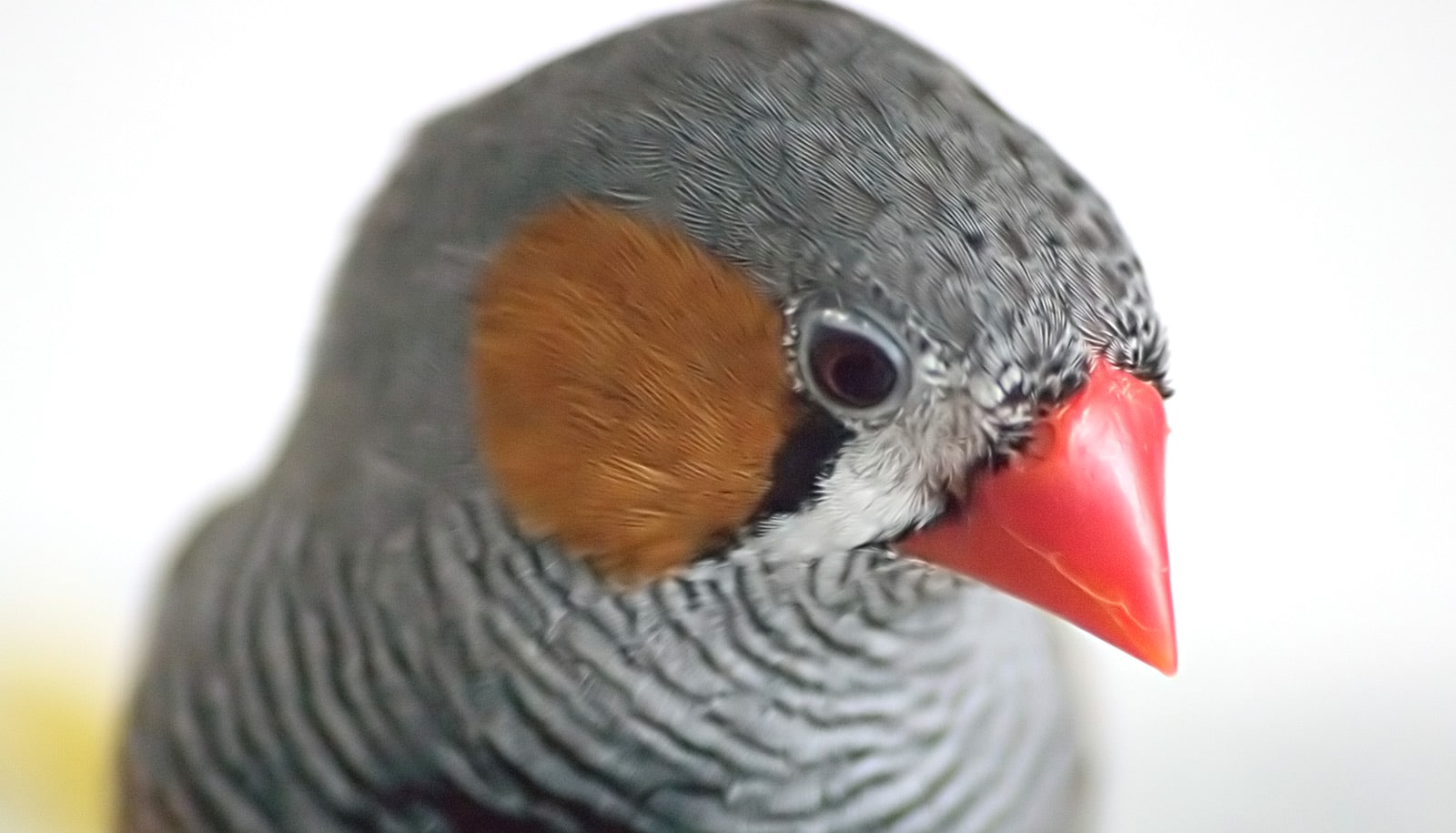
A specific protein in the brain could be behind changes in voice production associated with Parkinson’s disease, a study with zebra finches shows.
Parkinson’s disease is perhaps best known for its movement-related symptoms, particularly tremors and stiffness. But the disease is also known to hinder vocal production, giving those with Parkinson’s a soft monotonous voice. Those symptoms, research has suggested, often appear much earlier in the disease’s development—sometimes decades before movement-related symptoms.
The new finding that a specific gene commonly associated with Parkinson’s may be behind those vocal-related issues could help lead to earlier diagnoses and treatments for Parkinson’s patients.
“We have this big gap here—we don’t know how this disease impacts the brain regions for vocal production, and this is really an opportunity to intervene early and come up with better treatments,” says Julie E. Miller, an assistant professor of neuroscience and of speech, language, and hearing sciences at the University of Arizona.
Watching the birdie
To investigate any correlation between vocal changes and the Parkinson’s-related gene—known as alpha-synuclein—the researchers turned to the zebra finch, a songbird native to Australia.
The birds are an ideal model for human speech and voice pathways for several reasons, says lead author César A. Medina, a former PhD student in Miller’s lab who is now a postdoctoral scholar at Johns Hopkins University.
Young finches learn their songs from older, father-like male birds, much in the same way babies learn to speak by listening to their parents. The part of a finch’s brain that deals with speech and language is also organized very similarly to its counterpart in the human brain.
“These similarities across behavior, anatomy, and genetics allow us to use the zebra finches as a model for human speech and voice,” Medina says.
To see how alpha-synuclein might affect vocal production in the birds, researchers first took baseline recordings of their songs. They then introduced a copy of the gene into some of the birds; other birds were not given the gene so researchers could compare the results. The researchers recorded all the birds’ songs again immediately after introducing the gene, and then one, two, and three months later.
The researchers used computer software to analyze and compare the acoustic features of the songs over time, studying pitch, amplitude, and duration of the songs to determine whether and when the birds’ vocal production changed.
Initial findings showed that alpha-synuclein did affect song production. The birds with the gene sang less after two months, and they sang less at the start of a song session three months after receiving the gene. The vocalizations were also softer and shorter, findings similar to what is seen in the human disease.
Parkinson’s and the human voice
To determine whether the effects on speech were connected to changes in the brain, the researchers zeroed in on a section of the brain called Area X. They found that there were higher levels of the alpha-synuclein protein in Area X, helping them establish that the gene did, in fact, cause the changes in the brain that led to changes in vocal production, Medina says.
This connection, he adds, had been predicted in previous Parkinson’s research, but it was not conclusive.
The next step, Miller says, is figuring out how to apply these findings to human data, which could provide more answers that lead to better Parkinson’s diagnoses and treatments—ones that come long before movement-related symptoms tell a patient to visit a neurologist.
The long-term goal of the Miller Lab, she says, is to partner with other researchers and private companies to develop drugs that target alpha-synuclein and other genes associated with Parkinson’s.
Doing so, Medina says, would mean “we could stop the progression of Parkinson’s disease before it becomes a detrimental impediment to the quality of life for the patient.”
The study appears in PLOS ONE.
The Parkinson’s and Movement Disorder Foundation, the National Institutes of Health, the National Science Foundation, and the University of Arizona supported the work.
Source: University of Arizona